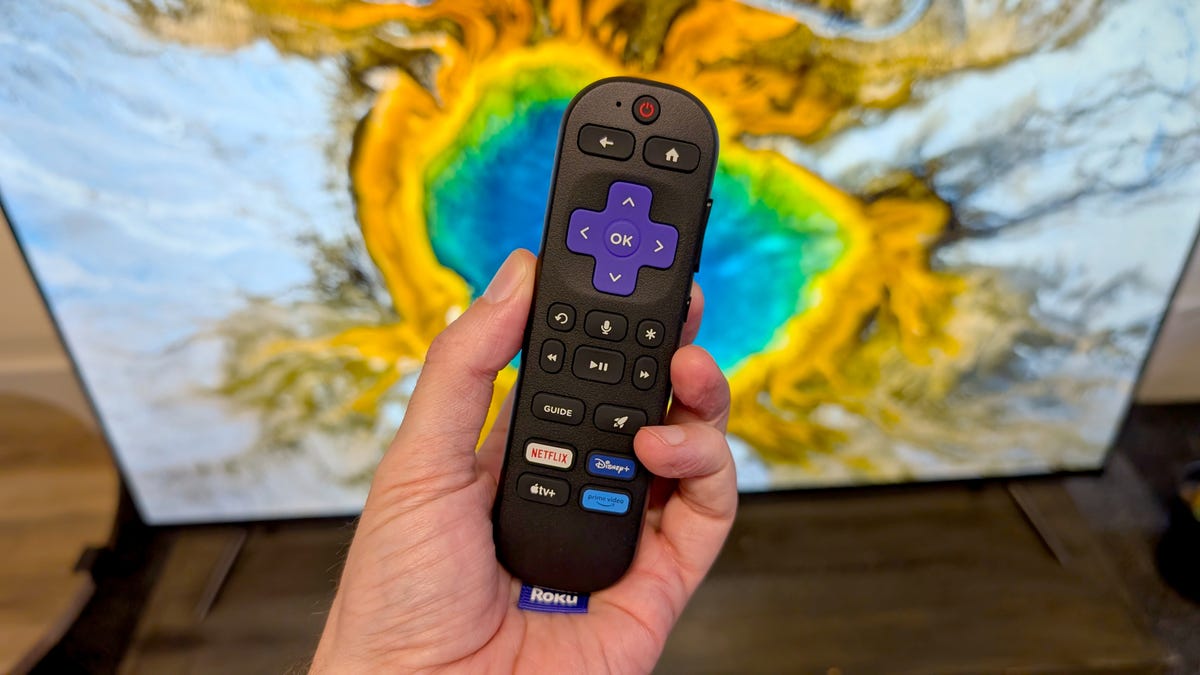The Fire TV remote in front of the Amazon 4-Series TV (2024)
When setting up these TVs, I was impressed to see Filmmaker Mode on two of these TVs (Samsung and Hisense). As the closest thing the industry gets to standardization, this mode helps ensure some consistency when watching TV and movies. By comparison, the Fire TV only has a choice of Movie Dark and Movie Bright (lit rooms) while Roku has its own Movie mode.
I tested the TVs by streaming movies, using Fandango at Home, including It and Spider-Man: Into the Spider-Verse. These two movies are tests for any TV — the ability to display either moody, high-contrast scenes (It) or the vivid colors of a comic book (Spider-Man.) In general, I found that the Hisense had the best contrast and best color saturation, while the Fire TV and Roku are brighter in movie modes.
Using the opening scenes of It, as Georgie descends the stairs, I found that the Roku had the poorest shadow detail of the four, with the details of intricate woodwork and wall under the stairs crushed into a blue/black.
Meanwhile, it was the Hisense which had the best shadow detail — with more of the under-stairs area visible over these few frames. The Hisense had a solidity to its image that the other TVs lacked. As Georgie moves into the basement the room looked real, whereas the other TVs devolved into grey fog with disembodied furniture In addition, black areas of the picture — even on the black bars at top and bottom– were truly black and not dark blue or grey as with the Samsung and Fire TV.
Side-by-side picture comparisons (from left): Roku Select, Fire TV 4-Series, Samsung U8000 and Hisense QD7.
As with last year’s Samsung TV — red areas of the U8000’s picture are a little desaturated, and this was most obvious during Spider-Man: Into the Spider-Verse. At 32.48, during the memorial service for the old Spider-Man, Spidey’s suit looked a little more bedraggled on this TV as opposed to both the Fire TVs which had vibrant reds. Lastly, the Roku looked vibrant in its rendering of Spiderman’s red and blue, but the picture looked a little 2D and flat. The Roku did pick up a little during the blazingly-bright collider sequence, with the brightest picture of the four, but the Hisense had the best contrast.
I did find one when testing the Roku, in that its off-axis response was quite poor. Even when I was sitting dead-center of the screen at a distance of six feet I was never on-axis to all of the screen — there was always a part that’s just off axis.
As far as bright-room performance is concerned, they all had some level of reflectivity though some were better at rejecting direct light sources than others. I shone my cell-phone flash on each of the TVs in turn and found the Hisense was the best here, with a bright center but reduced corona. The next three were similar to each other though the Fire TV’s reflections were dullest, then the Roku and the Samsung had the brightest reflections.
Light output in movie mode (lumens)
| Brightness | |
|---|---|
| Hisense QD7 | 618 |
| Samsung U800 | 291 |
| Fire TV 4-series | 300 |
| Roku Select | 355 |
Read the full article here


